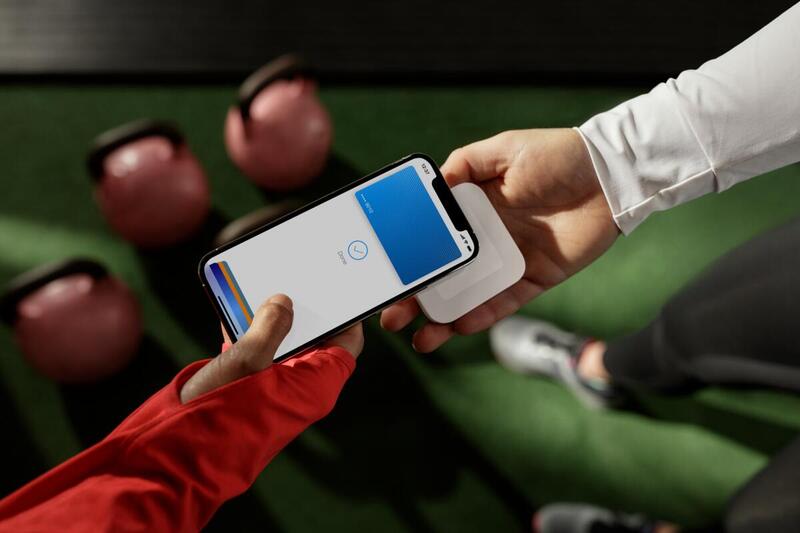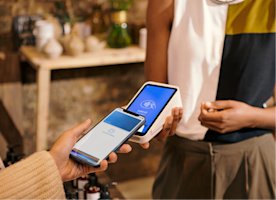In today’s fast-evolving world of payments, it can be easy to get lost in the sea of trendy slang and buzzwords. But if there’s one term worth your attention, it’s contactless payment. From buying a morning coffee to paying for groceries, this method has transformed how we handle transactions, making payments quicker, more convenient, and more secure.
But what exactly is a contactless payment, and are there spending limits?
Contactless payments are made through your mobile device or contactless card, allowing you to purchase items with just a tap. Though contactless payment limits are in place to prevent fraud, they have been raised recently to accommodate changes in consumer behaviour.
Accept Apple Pay and chip cards everywhere.
Order the Square contactless and chip reader.
Here’s what you need to know about contactless payments and why they’re so secure:
What is a Contactless Payment?
Contactless payments — much like EMV payments — are also a lot more secure than payments via magnetic stripe cards. Magstripe cards are extremely outdated (they’ve been around since the 1960s). The information associated with your bank account on a magstripe card is static (it’s right there on the stripe). So, if fraudsters get hold of your card, it’s relatively easy for them to lift and clone your data (and go on a shopping spree). With contactless payment, you don’t have to worry about that.
How do contactless payments work?
As the name suggests, a contactless payment doesn’t require physical contact between the buyer’s smartphone or credit card and the POS terminal. You might also have heard the term NFC, which stands for “near field communication.” It’s the technology that powers contactless payments through a type of radio frequency identification (called RFID). NFC transactions occur over a specific radio frequency that enables the card or smartphone to communicate with the card machine when they’re close together (usually 10 centimetres or less).
What is the maximum contactless payment in Ireland?
Contactless payment limits protect consumers and businesses from fraud. In Ireland, the limit was raised from €30 to €50 during the COVID-19 pandemic, making it easier and safer for consumers to make everyday purchases without needing physical contact or handling cash.
For purchases exceeding €50, customers can still use Chip & PIN card payment or mobile contactless payments authenticated via biometrics, which don’t have an upper limit. Mobile payments like Apple Pay and Google Pay, when paired with fingerprint or facial recognition, offer an extra layer of security for larger transactions

Contactless Payment Technology - A Brief History
NFC is a type of radio frequency identification (RFID) technology that allows us to identify things through radio waves. RFID is nothing new—it’s been used for decades for things like scanning items in grocery stores, luggage on baggage claims and tagging cattle. It’s increasingly used in video games and, more importantly, to enable contactless mobile payments.
What is a contactless payment card?
It’s rapidly becoming the standard for debit and credit cards to have NFC technology. This allows the customer to pay for items by tapping or passing their card above the payment reader. These types of cards are called contactless payment cards.
Are Contactless Payments Secure?
It’s become the norm to use apps for everything from ordering takeout to booking a haircut, but as a consumer, you might be weary of using your phone to make purchases. Well, you shouldn’t be, and here’s why: Contactless payments are much more secure than magnetic stripe cards, whose incredibly outdated technology makes them relatively easy to clone. This means you can become the victim of fraudulent charges and identity theft. Contactless payments are authenticated payments, meaning they’re really hard to hack. In a contactless payment, the data associated with your credit card on file is encrypted and constantly changing. So, even if fraudsters were to hack a system, the data they would find there would be useless.
Square contactless payments are even more secure because the transaction is handled starting at the virtual terminal through the payment gateway and eventually back to the merchant. If you use Square payment processing, PCI compliance is easy because we provide all the pieces necessary to protect the cardholder’s data from the moment it’s recorded at the point of sale to when we deliver funds to your merchant account.
What are Different Types of Contactless Payment?
Perhaps the most talked-about example of contactless payment is Apple Pay. It works on the latest iPhones and Apple Watches, all equipped with NFC technology. The latest iPhone models also have Apple’s facial recognition technology, TrueDepth Camera, so even if your phone is stolen, no one can access the credit cards stored in your app. To purchase with Apple Pay, wait until the light on the payment reader turns on, and then angle the device’s camera sensor up to your face. You’ll need to invest in a contactless reader to enable Apple Pay at your store. The Square Reader accepts both Apple Pay and EMV cards.
Other types of contactless mobile payments
Google Pay
Google Pay (formerly Android Pay) is Google’s mobile wallet technology and one of the more popular NFC mobile payment apps. It is available on all NFC-enabled devices that run Android Lollipop version 5.0 or later. To use Google Pay, customers open the app on their phone (which requires the user to have a secure lock screen) and complete the contactless payment transaction by holding their device over the payment reader.
Samsung Pay
Samsung Pay works on newer versions of Samsung Galaxy devices. Samsung Pay also works on NFC contactless readers. When you’re ready to pay, open the Samsung Pay app on your phone and tap Pay.
Magnetic Stripe Data (MSD) cards vs. Contactless EMV
Magnetic stripe cards are magnetised. When you swipe them, the payment processor reads the magnetic fields and matches them to your bank account information. However, this static data makes it easier for fraudsters to lift bank information and clone it onto a new card.
On the other hand, the data on EMV chip cards is constantly changing, making it extremely hard to isolate and extract. To isolate and clone it, someone must enter the physical chip circuit and manipulate things to get your bank information. This is extremely difficult for even the most sophisticated fraudsters.
Contactless payment technology has revolutionised how we shop, offering speed, security, and convenience all in one tap. With increasing spending limits in Ireland and widespread support for mobile payment apps like Apple Pay and Google Pay, there’s never been a better time to adopt contactless payments.
To learn more, explore Square’s tap-to-pay solutions.

